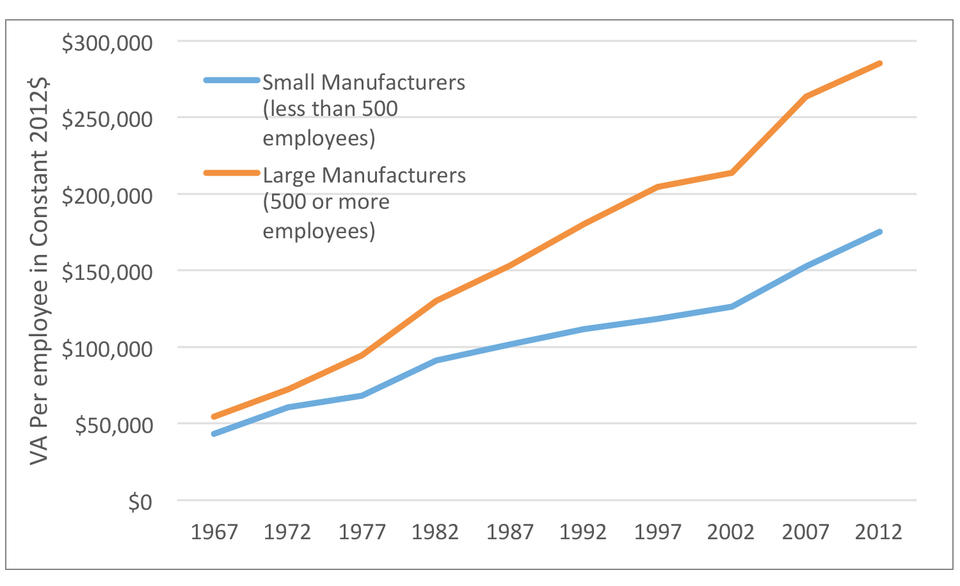Manufacturing Innovation Blog
Powered by the Manufacturing Extension Partnership

A few days ago I went back and re-read the book, Learning to Change, which I do every few years. It helps contribute to my sunny disposition and keeps me grounded and focused on the important things. Written in 1993, most of the younger generation might not have even heard of the book. It serves as a seminal document that provided much of the rationale for what is now the Manufacturing Extension Partnership.
Learning to Change lays out the barriers to improving the performance and productivity of small and medium-sized companies and ways that these barriers could be overcome. Even today, the arguments remain relevant. Page 1 notes that “many of these smaller [manufacturing] firms, however, are operating far below their potential. Their use of modern manufacturing equipment, methodologies, and management practices is inadequate to ensure that American manufacturing will be globally competitive.” It is important to point out that only some of the barriers relate to technology, while others include “inadequate resources – people, money, expertise, information – and insufficient time” for why many smaller firms are not improving their manufacturing performance as quickly as others. It is likely that the gap also reflects the position of smaller manufacturers in supply chains and the markets which they serve. These same challenges, identified in 1993, remain today. MEP has been addressing just these challenges for nearly three decades, with lots of success, but there are thousands of manufacturers out there that still need a guiding hand. With manufacturers getting smaller, they need to continually become more resourceful.
Every five years, the U.S. Census Bureau conducts the Economic Census of Manufacturers. The data provided are a gold mine of information for folks like me. So, like a child waiting for Christmas and that Red Ryder BB Gun I’ve always wanted, I wait for the release of the census, often impatiently. Christmas came in August this year. The more detailed data that I look forward to focuses on value-added by firm size.
Small manufacturers are critical to our nation’s economic well-being, representing nearly 99 percent of all manufacturing establishments. Small manufacturers in particular account for 73 percent (8.2 million jobs) of all manufacturing employment, generate about 2/3 of all manufacturing value-added, are integral links of supply chains (about 60 percent of a typical manufacturer’s costs is in materials), and directly and indirectly export their products. Yet, smaller manufacturing establishments lag behind larger ones when measured on value-added per employee. I use value-added (Sales – COGS (cost of goods sold)) per employee as a proxy for productivity and therefore have to wait until the data for value-added by establishment size are released for a more complete analysis. The chart below shows the track of productivity across smaller (less than 500 employees) and larger (500 or more employees) manufacturers. Over the last 10 years, productivity across smaller manufacturing establishments grew at a slightly higher rate.

The core rationale for a program like MEP is to close the productivity gap between larger and smaller manufacturers. Why should we care about productivity you ask? Because, ultimately, productivity is the most important determinant of our standard of living and wages. As Paul Krugman once observed, “productivity isn't everything, but in the long run it is almost everything. A country's ability to improve its standard of living over time depends almost entirely on its ability to raise its output per worker.”
Yet the gaps persist along with the barriers that inhibit the productivity of small manufacturers. While it’s hard to imagine that MEP alone can close this divide, it is important to use this as a North Star to guide our activity. Improving productivity is not an accidental activity, but something that must be planned. Productivity results from a commitment to excellence, shrewd planning, and purposeful effort. This requires working on multiple fronts including reducing costs, growing the top line, adopting new technologies, and working smarter. With the challenges and barriers outlined in Learning to Change remaining, we still have a lot more work to do. Let’s get to it.
About the author
Related Posts
Comments
- Reply


